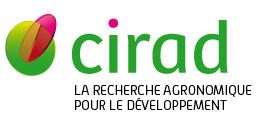Growth, production, and bean quality of Coffea arabica as affected by interspecific grafting : Consequences for rootstock breeding
Bertrand B., Etienne H., Eskes A.. 2001. HortScience, 36 (2) : p. 269-273.
In order to avoid nematode damage to roots of Coffea arabica L. in Latin America, a common practice is interspecific grafting on C. canephora var. Robusta (Pierre) rootstocks. The performance of two C. arabica cultivars, 'Caturra' and `Catimor T5175', was evaluated on four rootstocks: C. canephora var. Robusta (`T3561' and 'T3757') and C. liberica var. liberica (Hiern) and var. dewevrei (Lebrun), over 5 years in a trial at 1180 m elevation in Costa Rica. Nongrafted plants of the two Arabica cultivars were used as controls. Mortality of plants grafted on the two C. liberica cvs. was >20% vs. 6% to 13% for plants grafted on C. canephora, and 3% to 4% for the two controls. Analysis of accumulated yields over four harvests showed that the rootstocks limited stem girth and reduced yield 10% to 48%. Yield on the C. canephora rootstock was greater than that on the two C. liberica cultivars. However, grafting did not affect female fertility (peaberries, empty berries) or content of several chemicals, such as caffeine, fat, and sucrose. The two C. liberica rootstocks significantly reduced aroma and bean size. Histological studies revealed symptoms of incompatibility, characterized by more dilated and less distinct growth rings and appearance of plugged vascular connections. The poor performance of the rootstocks may therefore be explained by partial incompatibility. However, growth and productivity were also affected by poor adaptations of C. canephora, C. liberica, and C. dewevrei to the lower temperature at high altitudes and by morphological differences in the root systems. These results emphasize the need to develop better adapted rootstock cultivars from C. canephora var. Robusta.
Documents associûˋs
Article (a-revue û facteur d'impact)
Agents Cirad, auteurs de cette publication :
- Bertrand BenoûÛt — Bios / UMR DIADE
- Etienne Hervûˋ — Bios / UMR DIADE
